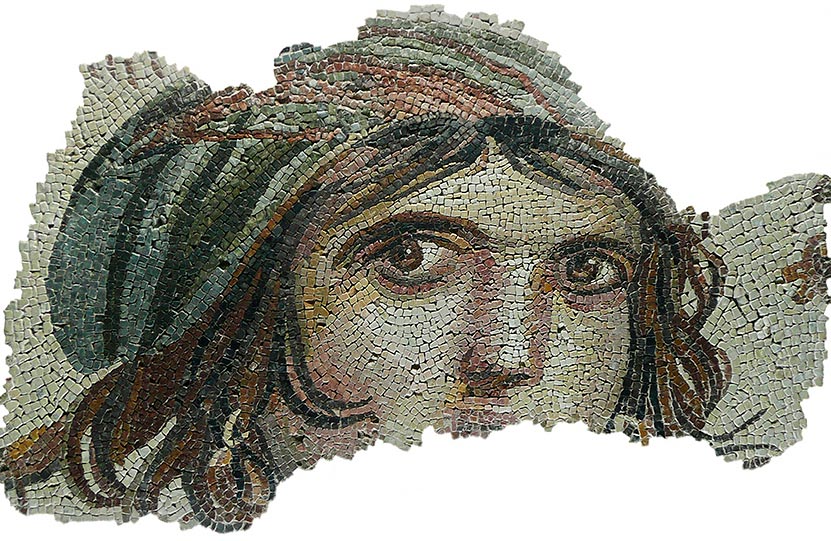Think
Santa Criz, an archaeological site to be revived
Íñigo Portela and Paola Bernal, 4th year students of Degree in History + Diploma in Archaeology and History and Journalism + Diploma in Archaeology, respectively, tell us about their experience in the recent archaeological excavations in Santa Criz.

group Since the 6th of September, a group of students from Degree in History and Diploma in Archaeology have been working on an archaeological campaign that is being carried out at the site of Santa Criz de Eslava in Navarra. At the beginning of the course we did not want to miss the opportunity to tell BeBrave readers how this campaign, which will last for three weeks, is developing in such a rich cultural environment as the Sangüesa region and the municipality of Eslava located in it.
The work fieldwork has been directed by a team of archaeologists including Txaro Mateo, Luis Romero, Macu Delage and Nerea López: Txaro Mateo, Luis Romero, Macu Delage and Nerea López, who, thanks to funding from the General Administration of Culture of the Government of Navarre and Eslava Town Council, have been able to carry out four soundings in the area around the cryptoportico of Santa Criz. All of this with the aim of continuing to learn more about the most monumental floor of a Hispano-Roman forum that we have in Navarre, goal .
A group group of students have had the opportunity to work at this site in weekly shifts (Monday to Friday) with schedule from 8:00 to 15:00. As far as the organisation is concerned, both the director of the Diploma in Archaeology, Dr. Javier Andreu Pintado, and the archaeologist Txaro Mateo Pérez, have been in charge of the organisation, who have been at contact with the students and have guided us in the good development of the campaign. They are very knowledgeable about this Roman site, Santa Criz de Eslava has become a tourist attraction as it is the largest Roman monumental city preserved in the Autonomous Community of Navarre, as well as one of the most impressive in the north of the peninsula. At final, Santa Criz de Eslava offers visitors an approximation of what a Roman city must have been like in the territory of the ancient peninsular ethnic group of the Vascones.
The site was discovered by the priest Juan Castrillo in 1917, but it was not until the mid-1990s that various archaeological campaigns were carried out at position by the researchers T. Mateo, P. Sáez and R. Armendáriz. The site contains remains of the pre-Roman city, the forum and the necropolis of the city. Around 195 BC, the Roman armies marched through the north of the peninsula, arriving at a Vascon castro on the top of a hill with interesting strategic elements such as its proximity to the Indusi river, its dominion over the Val de Aibar and over the valley of the Aragón river. It is calculated that this castro doubled in size during the Roman period, reaching an area of around 13 hectares, which is quite significant (the famous city of Numancia was approximately 8 hectares in size).
The name of the city is not known for certain, although several hypotheses are put forward according to the póleis cited by Ptolemy in his work when he speaks of the main cities of the Vascones in the 2nd century AD. The names that are postulated are Nemanturista/Nemanturissa or Biturís; however, it is not possible to be certain with absolute certainty and researchers are still working on this question.
With the coming to power of the Emperor Augustus, the appearance of the cities changed until they were similar to the appearance of the splendour of imperial Rome, as in the case of Santa Cruz de Eslava, which gradually spread out towards the valley, creating a typical Roman urban plan and establishing itself near the Iacca-Vareia road (what would be the Jaca-Logroño road for us today). The forum was the most important structure in Roman cities, the heart of the city, consisting of an open place and Structures on two levels, the cryptoporticus and a basilica, i.e. an administrative and judicial building. A third of this placehas been excavated, which has provided a wealth of information and a collection of architectural decoration with capitals, statuary, inscriptions and parietal painting.
The necropolis began to be excavated in the late 1990s and covers an area of about 2000m2. It is organized with different types of burials, some sumptuous with statues and others simpler with stelae and pits. Inside were recovered offerings, trousseaus, seeds and objects of daily use that can be known thanks to the Catalog of the exhibition of Santa Criz. On the other hand, since July 2019 the site has a exhibition of the most outstanding materials of the Roman city in the same village of Eslava very close to the location of the site. visit With thousands of visits per year, the site has a 90-minute guided tour by Nerea López, a graduate in History from the University of Navarra and member of group of research of Santa Criz.
We did not want to end this article without talking about what archaeological science is and what the day-to-day life of an archaeologist is like. The truth is that archaeologists do not loot temples in India, nor do they run after a giant rock, nor do they enter one of the Structures of the Nabataean city of Petra to find the Holy Grail. Cinema has contributed greatly to creating an image of the archaeologist that is far removed from reality. Archaeology is thescience that studies the material culture of past societies, and that is what we should refer to. It is a science, and as such it has its own method that must be used in order for research to be as rigorous and scientific as possible.

Archaeologists ask themselves questions that only the earth can answer, and at work they are always accompanied by picks, shovels, wheelbarrows, brushes and trowels with which they remove the different stratigraphic units to find the material remains. Relating, interpreting and contextualising everything finding is part of a task that requires many hours spent outdoors, with many early mornings and long journeys by car to remote areas. It is not all about trousseaus, marble statues and large mosaics such as those seen in museums around the world, as there is also enormous beauty in the detail offered by small everyday objects, which are, at final, what make a science that always provides surprises for those who dedicate themselves to it so attractive.
All this and much more is being experienced in the campaign that is being carried out at the site of Santa Cruz de Eslava, where students and archaeologists are working side by side to try to solve the mysteries hidden in this city that has become an enclave to be highlighted in the archaeological heritage of our region.
If you liked the article, you might be interested in one of our Degrees!









